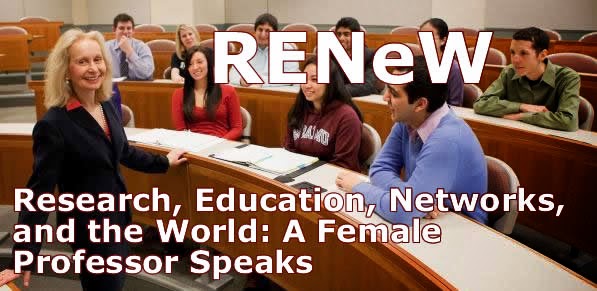Dr. Servi is a Group Leader at MITRE Corporation in Bedford, Massachusetts and is an INFORMS Fellow. I have known Les since our Brown University days in Applied Mathematics. He went on to get a PhD at Harvard and has had an illustrious career in industry. I stayed and received my PhD at Brown and became an academic.
The title of Les' talk today was: Robust Mission Network Analysis.
Deniz Besik, the President of the UMass Amhers INFORMS Student Chapter, and I had the pleasure of introducing our terrific speaker today.
In his talk, Dr. Servi emphasized the importance of finding useful patterns, and displayed a Dilbert cartoon, which noted that The Math should fix the guessing. His tweet on that cartoon he told us generated over 17,000 views.
In his talk, he described an extension of robust optimization in the context of functional dependency network analysis (FDNA), followed by analysis without hedging and then analysis with hedging.
His presentation was based, in part, on two papers of his, and also more recent work, with the papers being: "Deriving Global Criticality Conditions from Local Dependencies Using Functional Dependency Network Analysis (FDNA)", which he co-authored with P.R. Garvey, and which was published in the journal Systems Engineering in 2017 and the paper: "The Last Word: A Modeling Model," which was published in the Phalanx in 2017. He kindly shared these two papers with me and the figure below is from the latter and it is a variant of the figure, featured above, which was emphasized throughout his lecture today.
Some of the takeaways from his talk (and there were numerous ones which will provide us with food for thought for a long time to come):
- Simplicity, when effective and appropriate, is the highest form of modeling.
- Hope is a bad strategy for dealing with what is unknown.
- A model may have needless complexity, with a complex model's fragility producing unanticipated interactions among variables leading to spurious decisions.
- One should practice cautious hedging.
The cautious hedge involves solving a robust mission problem. Of particular note, was identifying critical nodes in the network.
We took a group photo after the presentation.
A special surprise was to have Karen Li, an Isenberg School of Management alumna, class of 2017, who was also a Commonwealth Honors College graduate, and winner of the UMass Amherst Leaders for the 21st Century Award at graduation last May, travel from Boston to come to the talk. Karen was featured in an article when we published a paper based on her honors thesis.
Lunch at the University Club that followed was a special treat with even INFORMS Fellow Dr. Peter Haas (formerly of IBM and now of the College of Information and Computer Sciences at UMass) joining us.
We thank Dr. Servi for sharing with us his latest, fascinating and extremely applicable research!

























